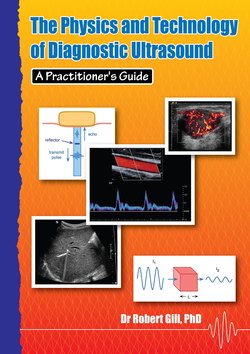Читать книгу The Physics and Technology of Diagnostic Ultrasound: A Practitioner's Guide - Robert Gill - Страница 5
Chapter 1: Introduction Introductory comments
ОглавлениеUltrasound (i.e. high frequency sound) is a very widely used medical imaging modality. It is based on the concept that low levels of ultrasound energy (generally in the form of short pulses) can be transmitted into the body. As it travels through the body the ultrasound interacts with the tissues, creating a series of "echoes".
These echoes can be detected by the machine's probe and processed to produce an image of part of the patient's anatomy. Other forms of processing can produce information about movement (e.g. the flow of blood) using the Doppler effect.
There are a number of reasons why it is essential to have an understanding of both the underlying physics and the technology (i.e. the principles of operation) of ultrasound instruments to be a competent practitioner.
First, ultrasound machines are complex. They contain a mixture of electronic circuits and digital processing, with the trend being towards increasing the level of digitisation. They provide many functions and so there are a large number of user controls. A feature of the industry has been constant technological innovation, with new modes of operation being added on a regular basis.
Secondly, an ultrasound examination is highly interactive. One reason for this is that every patient is different, and that the precise reason for the scan varies from patient to patient. Even something as well defined as a scan of the kidneys will vary depending on the question being addressed. In addition, the details of the examination will be dictated by what is found as the examination progresses.
Thirdly, ultrasound has significant limitations. An important example is the limits to its ability to penetrate deep into the body due to attenuation of the ultrasound energy as it passes through tissues. Equally important is the severe attenuation of ultrasound when it encounters air or bone. This means that the "acoustic window" through which many body regions can be scanned is quite limited.
An extreme example is echocardiology, where windows must be found that allow the ultrasound to pass through to the heart while avoiding the ribs and lungs. The sonographer or sonologist must be aware of these limitations and must be able to optimise both the scanning technique and the equipment settings to minimise their impact.
Fourthly, ultrasound images contain "artifacts", i.e. features in the images that do not accurately reflect the tissues being scanned. These artifacts need to be recognised as such during the examination, and their negative impact minimised. Measurements of structures must be made using correct scanning and measurement technique to minimise the impact of equipment limitations and artifacts on their accuracy.
Taken together, these considerations mean that the sonographer or sonologist must have a deep understanding of ultrasound physics and technology. They must also have a sound understanding of the controls of the machine and how they can be used to optimise the information displayed.
Finally, it is important to recognise that the main priority for the sonographer or sonologist must be to focus on the patient and on the information being displayed. Interaction with the machine's controls and the assessment of technical factors such as artifacts must therefore become intuitive so they do not distract attention from these priorities.
